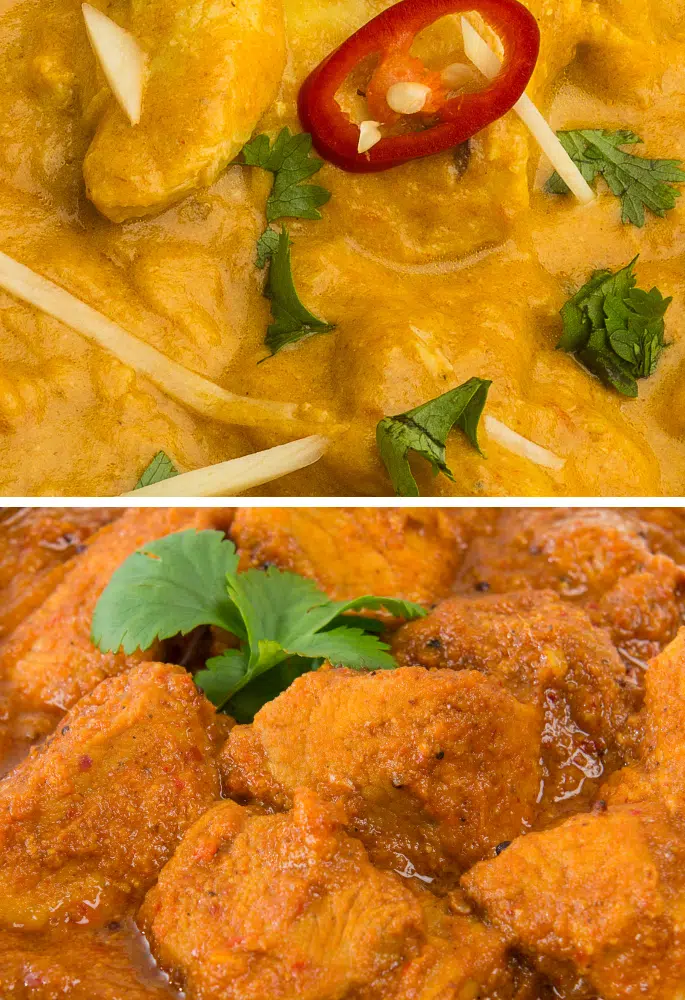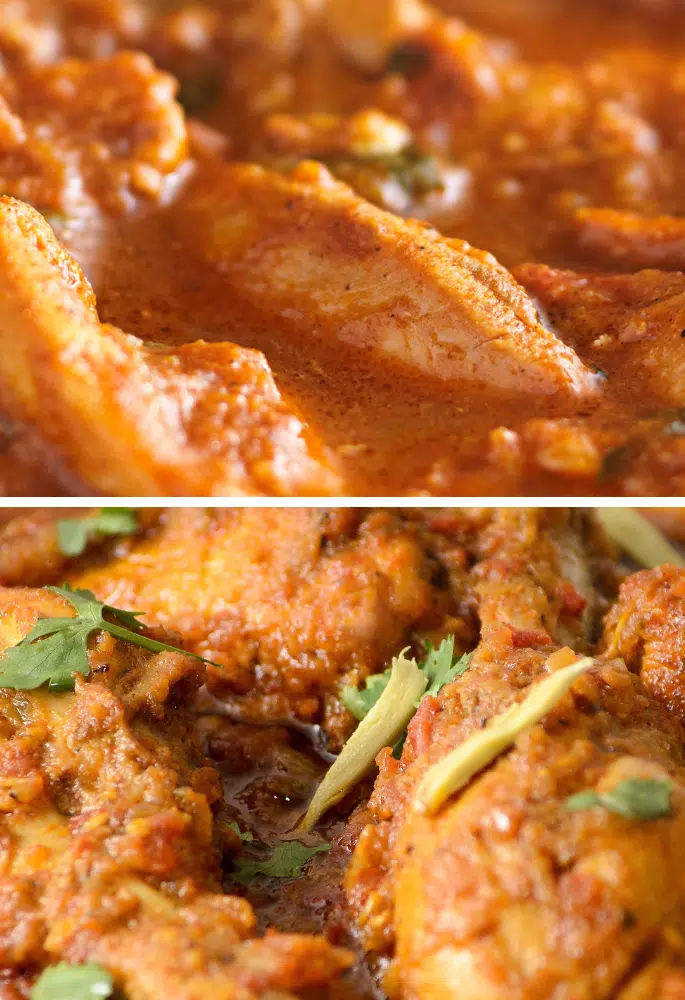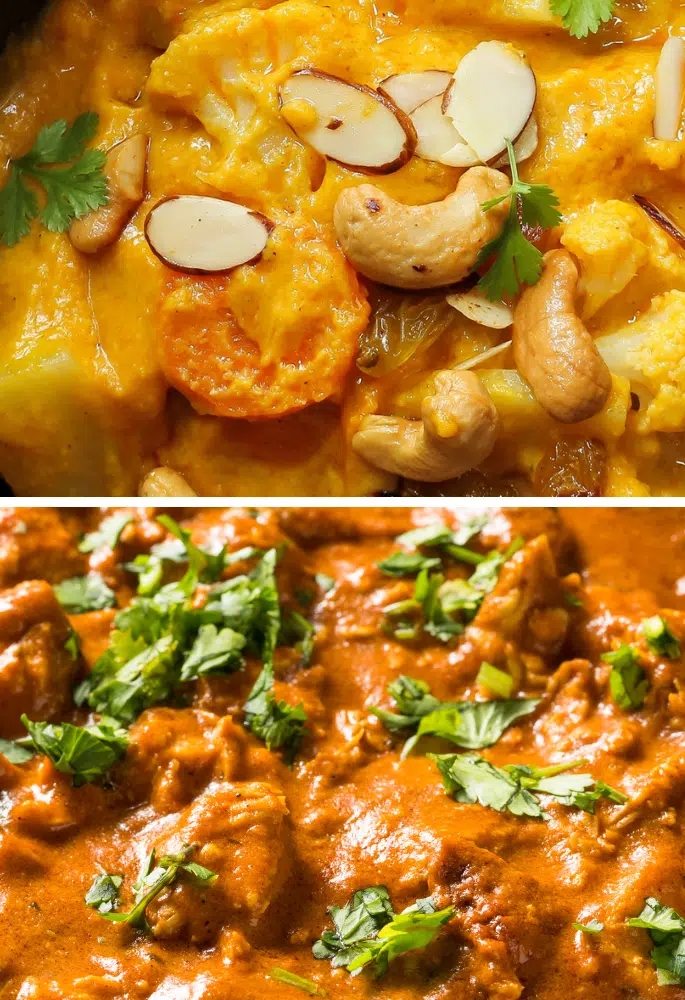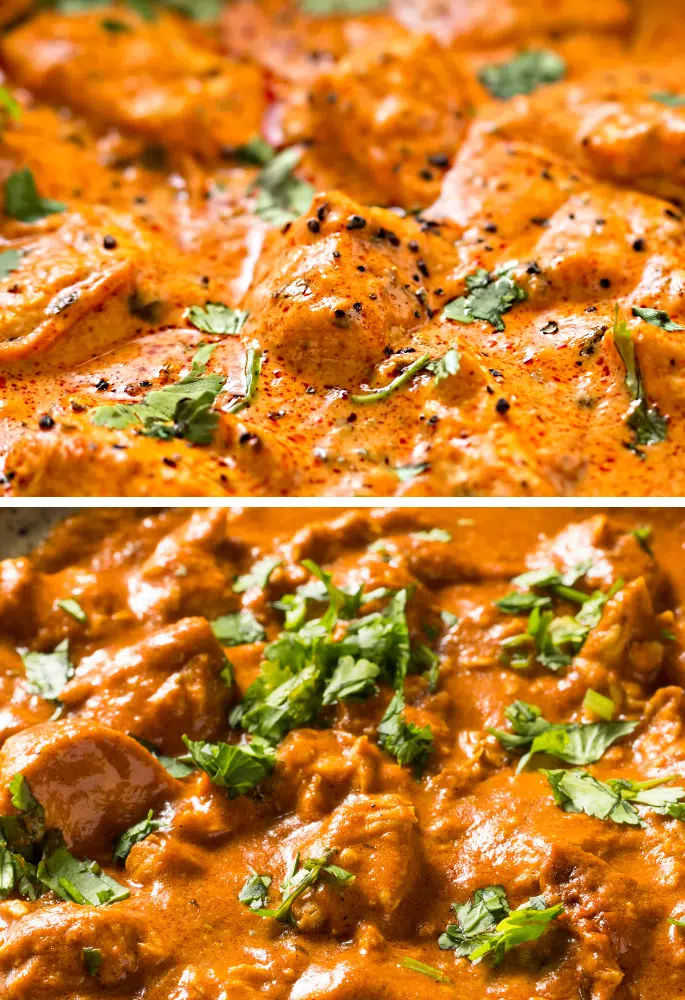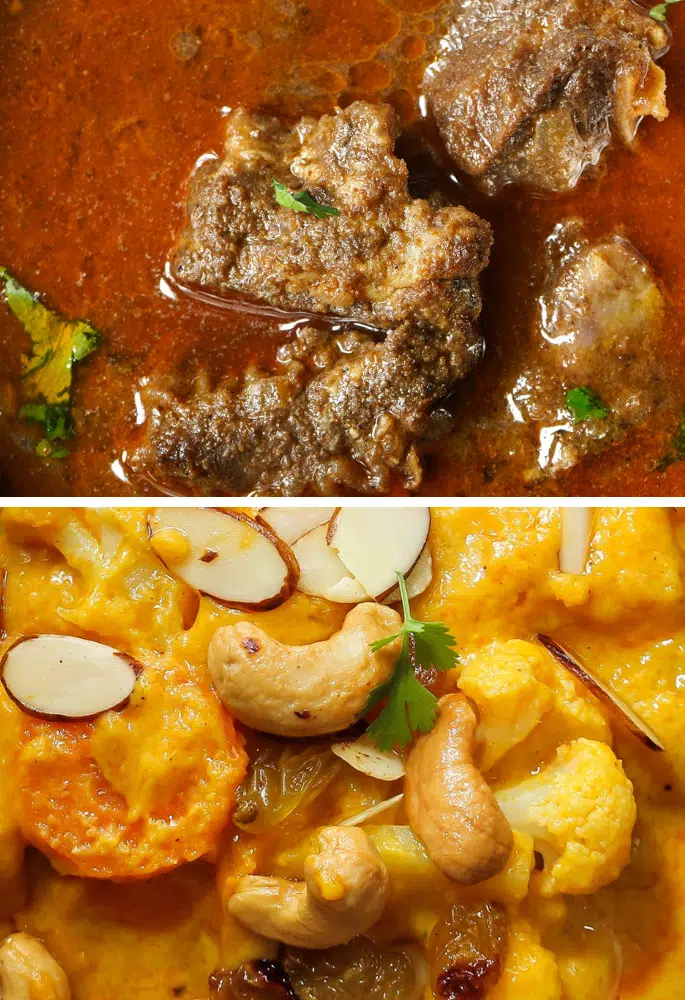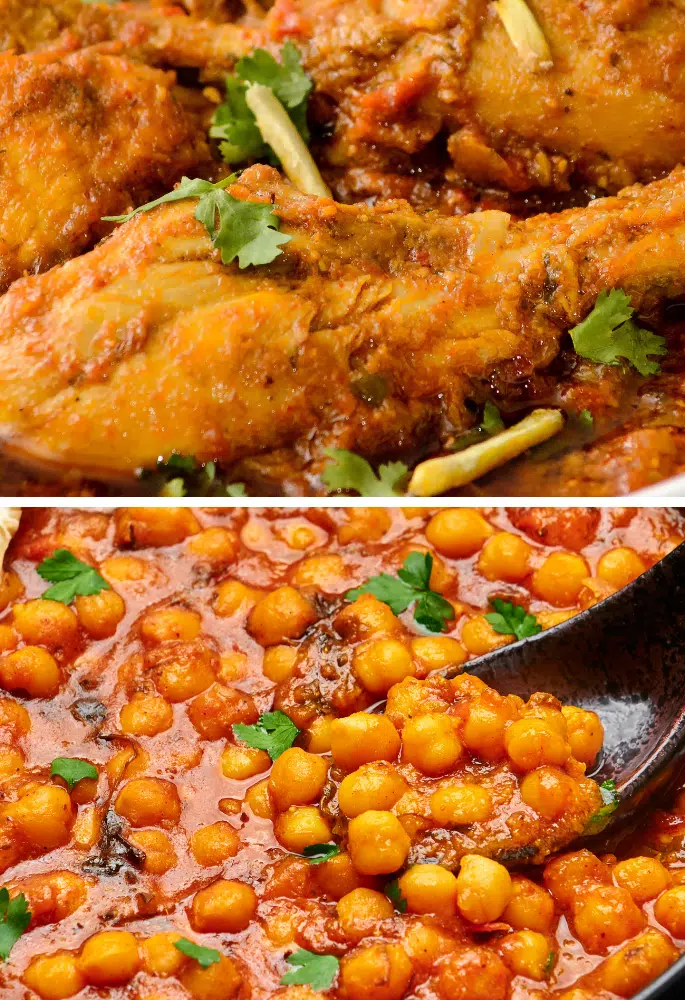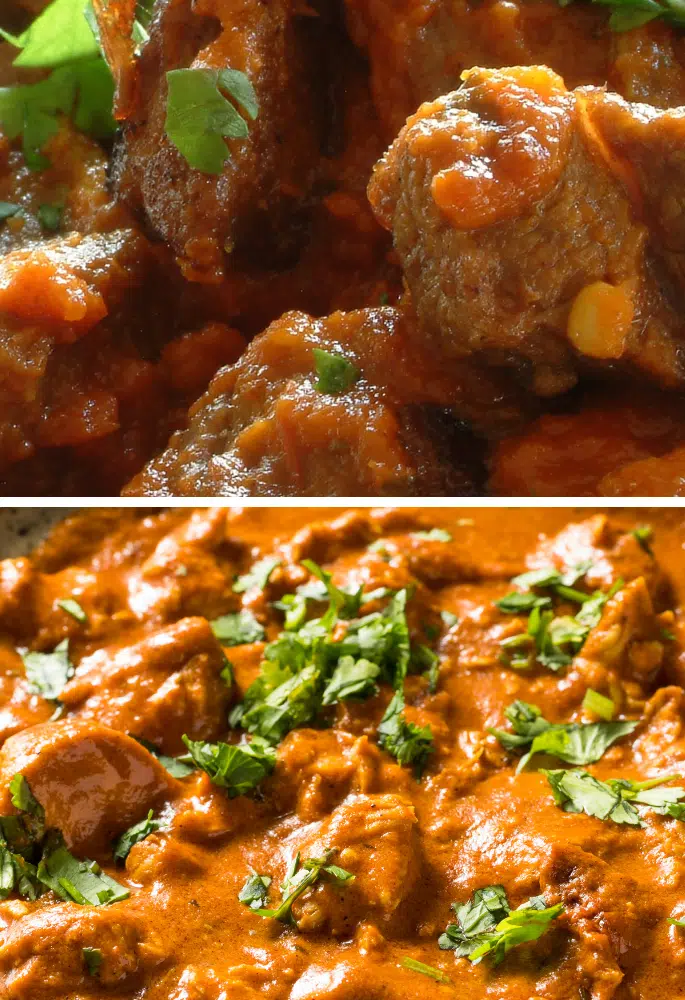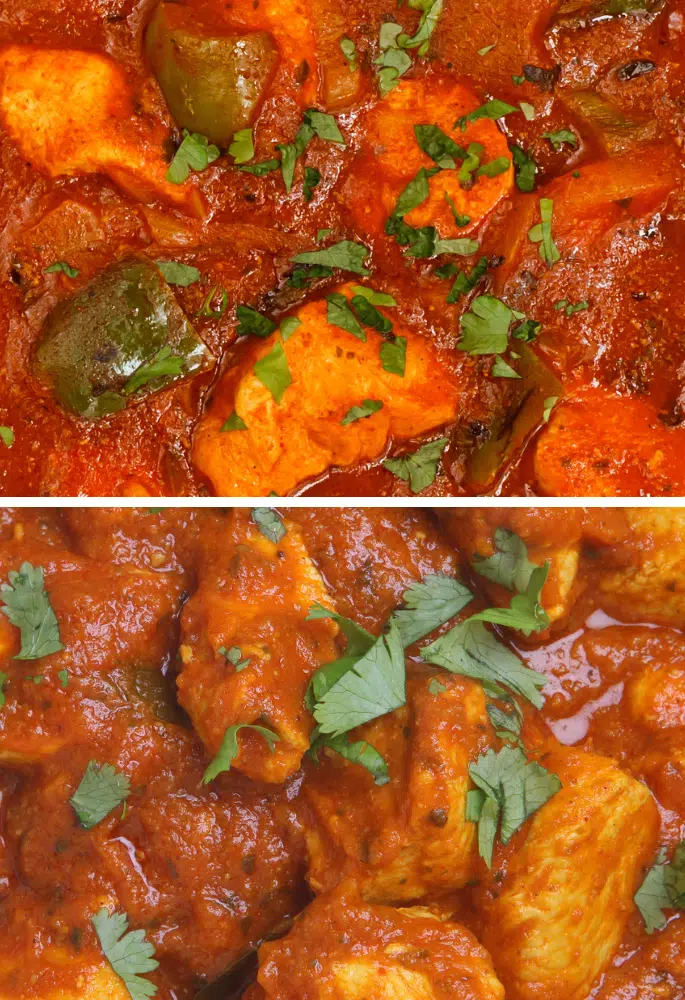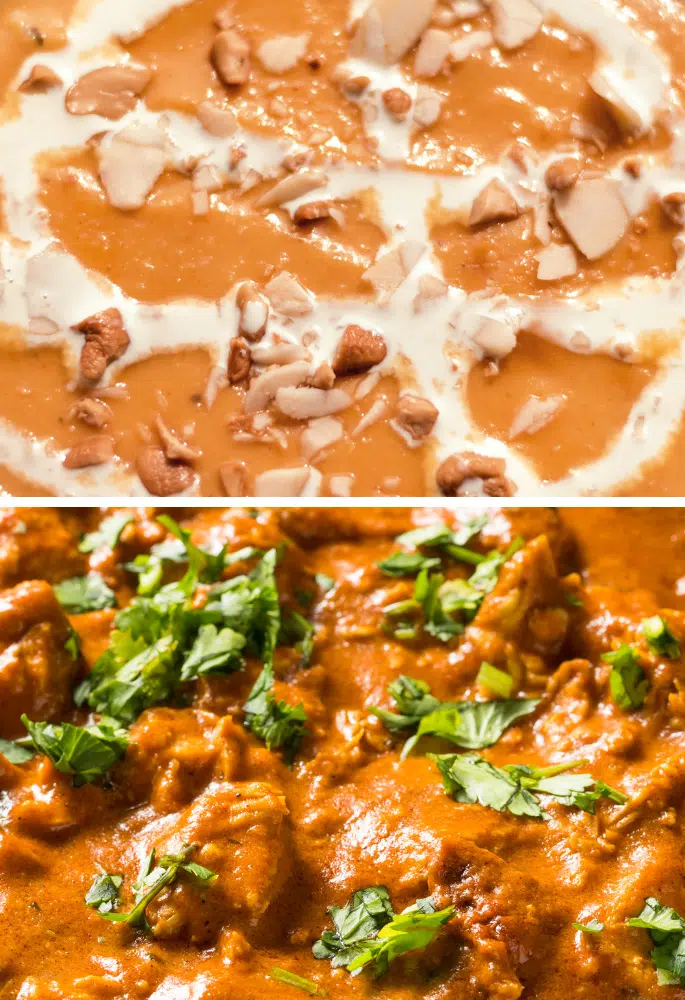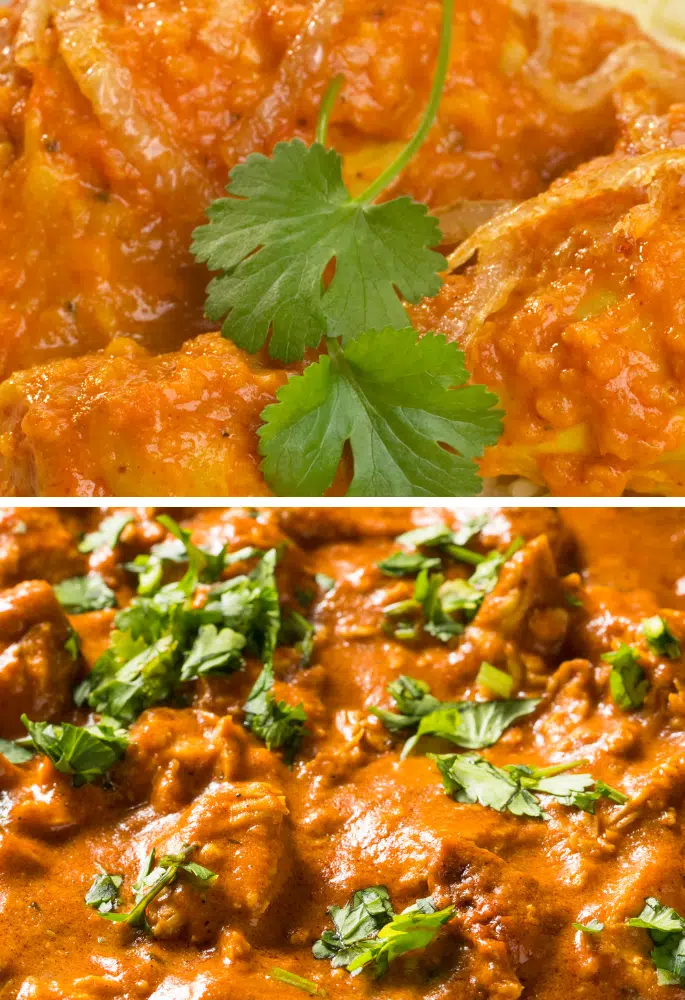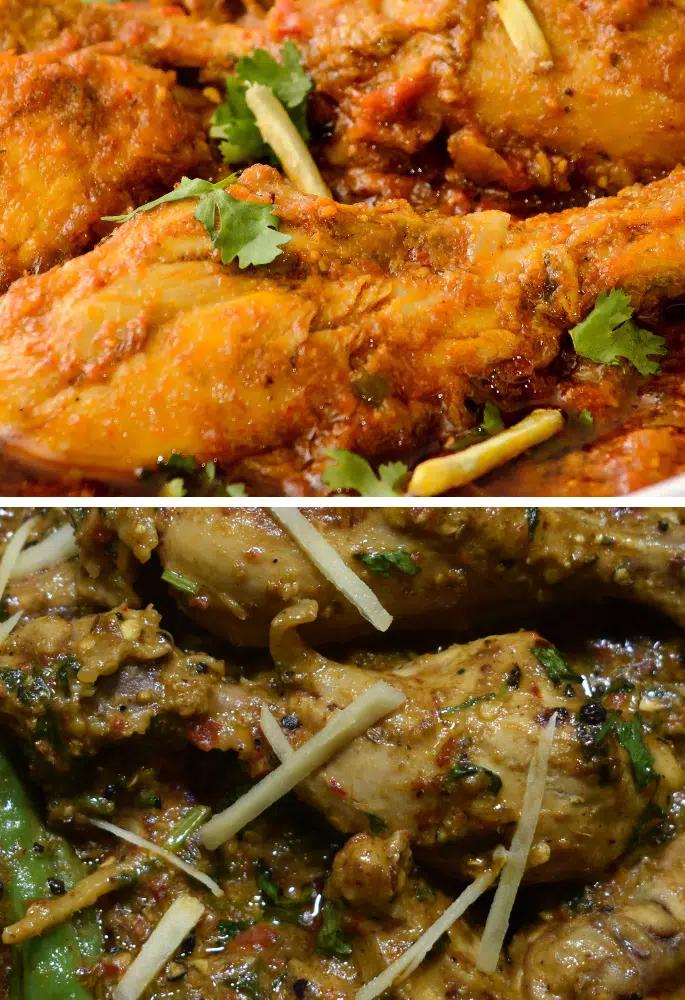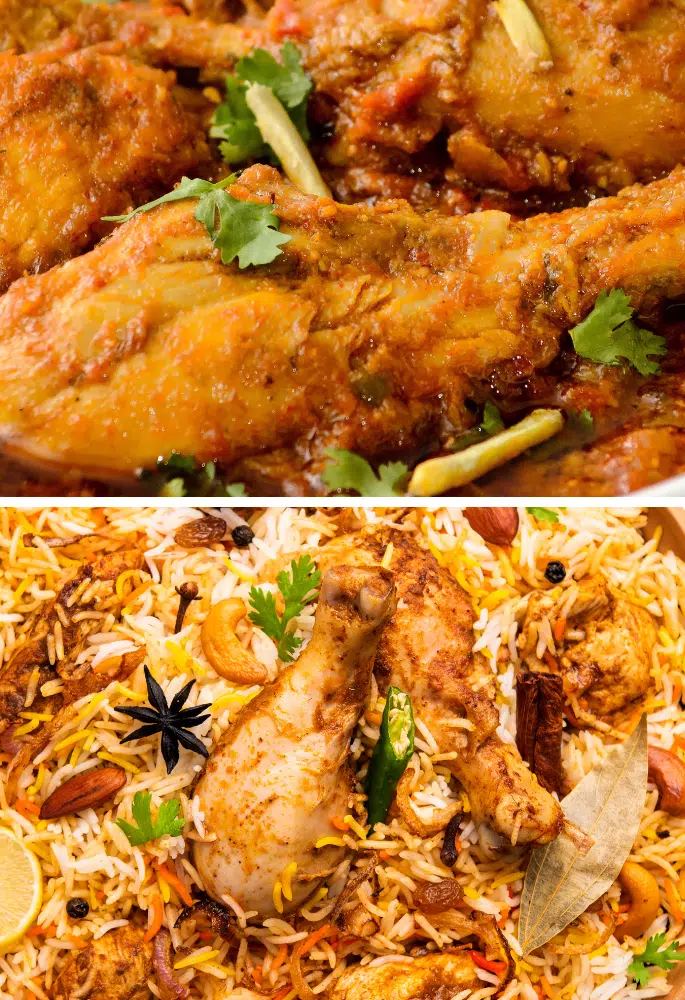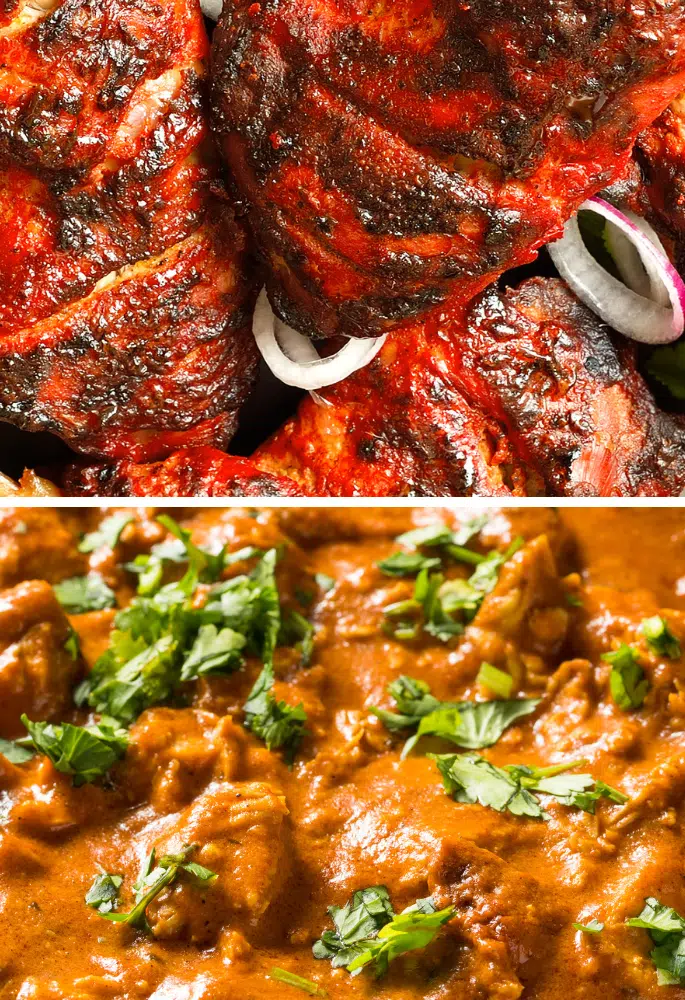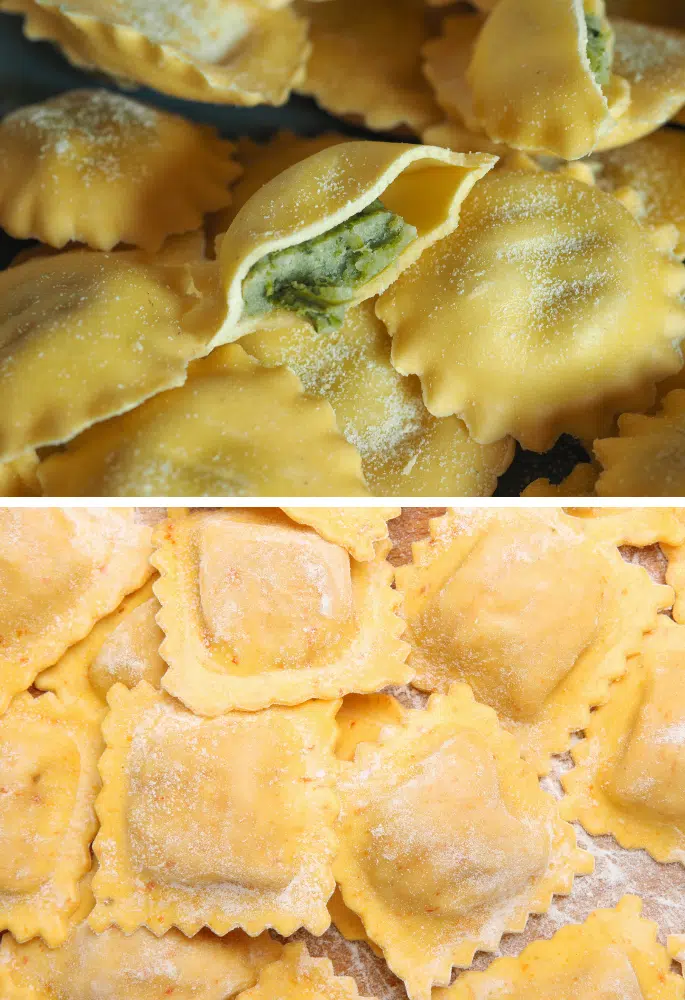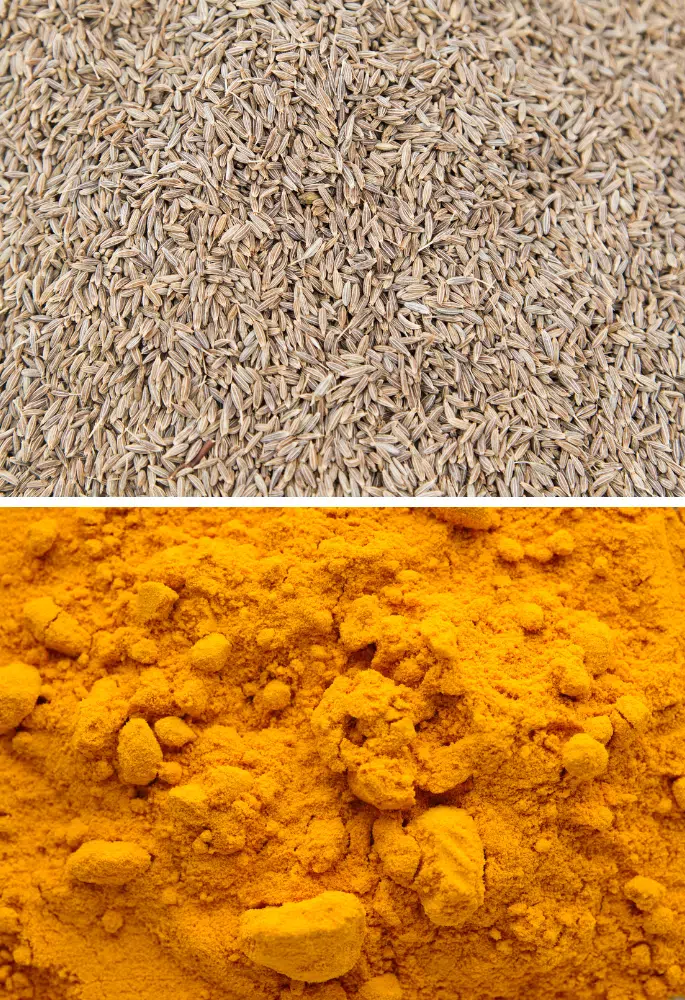You’ve probably heard of bhuna and vindaloo, especially if you eat Indian food regularly. They’re pretty popular choices! But how do they compare to each other?
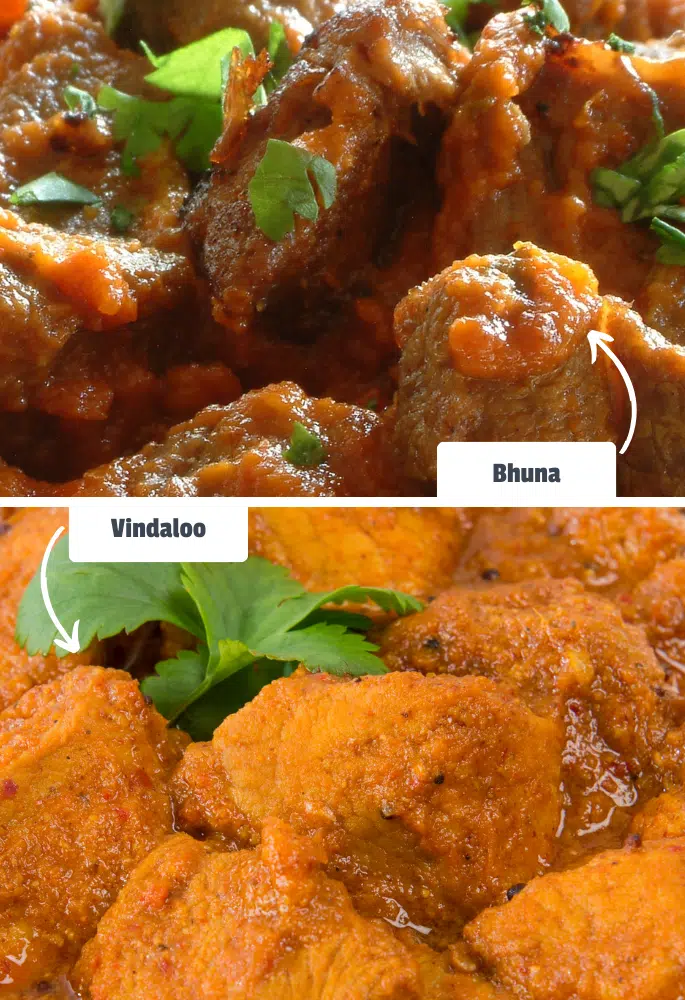
While Bhuna is known for its thick, spicy sauce and sautéing technique, Vindaloo stands out with its fiery, tangy taste and Portuguese influence. The key difference lies in their preparation methods and spice profiles.
What is Bhuna?
Bhuna is a cooking style originating from the Bengal region of India and Bangladesh.
The term “Bhuna” refers to the process of cooking spices in hot oil to release their flavours before adding meat. This method results in a dish with a thick, reduced sauce where the meat is thoroughly coated and infused with the spice mix.
Typically, Bhuna uses a blend of aromatic spices like cumin, coriander, turmeric, and garam masala, creating a balance of flavour without overwhelming heat.
In Bhuna, a traditional Indian dish, the meat typically used is lamb, although chicken, beef, or goat can also be used depending on regional preferences and personal taste.
What is Vindaloo?
Vindaloo, on the other hand, has its roots in the coastal state of Goa, heavily influenced by Portuguese culinary traditions.
Originally derived from “vinha d’alhos,” a Portuguese dish made with wine and garlic, Indian cooks adapted it using palm vinegar and added red Kashmiri chillies.
Vindaloo is renowned for its fiery heat and tangy flavour, often using a generous amount of chilli peppers, tamarind, and spices like mustard seeds, cinnamon, and cardamom.
Vindaloo traditionally uses pork, reflecting its Goan and Portuguese influences. However, in many variations, especially outside of Goa, chicken, beef, or lamb are commonly used.
Similarities Between Bhuna and Vindaloo
Although they clearly have a different flavour profile to each other, they do share a few similarities:
- Use of Spices: Both dishes use a rich array of Indian spices, including cumin, turmeric, and coriander. This means the underlying spice flavour is fairly similar.
- Popularity in Indian Cuisine: Bhuna and Vindaloo are both staples in Indian cuisine, particularly in restaurants and takeaway menus in the UK.
- Adaptability: Each dish demonstrates adaptability in ingredients, with variations including different meats or vegetarian options.
- Serving Style: Typically, both Bhuna and Vindaloo are served with rice or Indian bread like naan or roti, complementing their robust flavours.
Differences Between Bhuna and Vindaloo
There’s no getting away from the fact that these are different curries. The list of differences just shows that:
- Spice Intensity: Bhuna is moderately spicy, focusing on the depth of flavour, whereas Vindaloo is significantly spicier, with a sharp, pronounced heat.
- Sauce Texture: Bhuna boasts a thick, well-reduced sauce that clings to the meat, while Vindaloo features a slightly thinner, more acidic sauce.
- Cultural Influence: Bhuna is purely a product of traditional Indian cooking techniques, whereas Vindaloo reflects a fusion of Portuguese and Goan culinary practices.
- Common Proteins: Traditionally, Bhuna is often made with chicken, beef, or lamb, whereas Vindaloo is historically associated with pork, though variations exist.
- Flavour Profile: Bhuna offers a complex, layered spice blend without significant tanginess, while Vindaloo is distinguished by its sharp vinegar tang and aggressive chilli heat.
Bhuna vs Vindaloo: Which Wins?
If you had to pick between the two, which of these curries gets your vote? Do you prefer to subtle warmth of a Bhuna or do you like to be hit in the face with the heat of a Vindaloo?
Do You Prefer Bhuna or Vindaloo?
Hailing from Liverpool, Oliver is an adventurous chef with a penchant for exploring diverse cuisines and novel ingredients. Ollie, combining his love for local British flavours with global influences, brings innovation and charm to home cooking.


